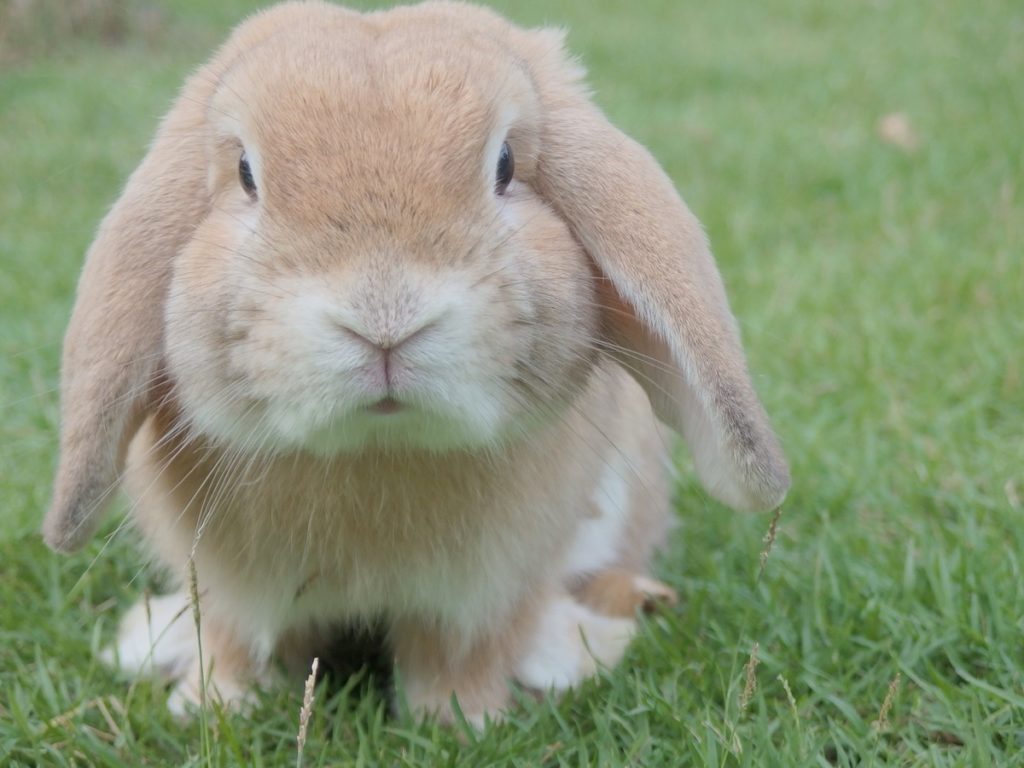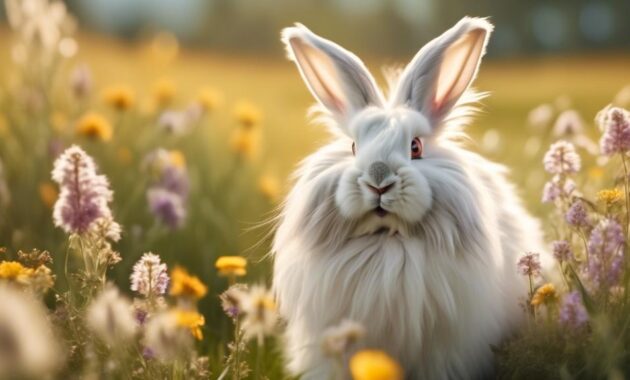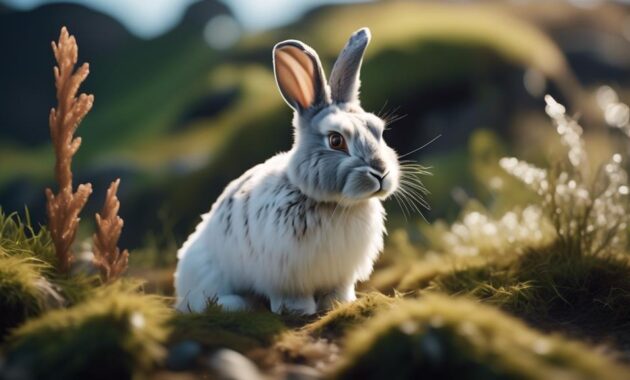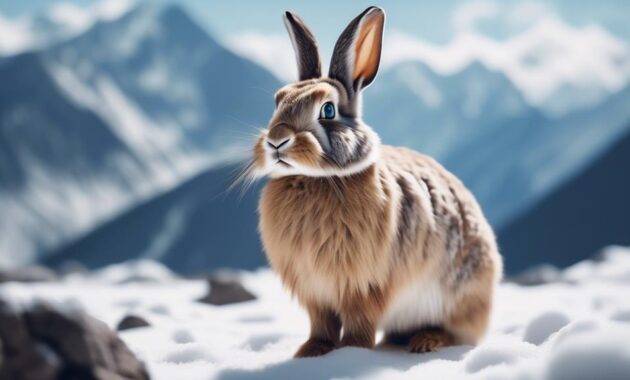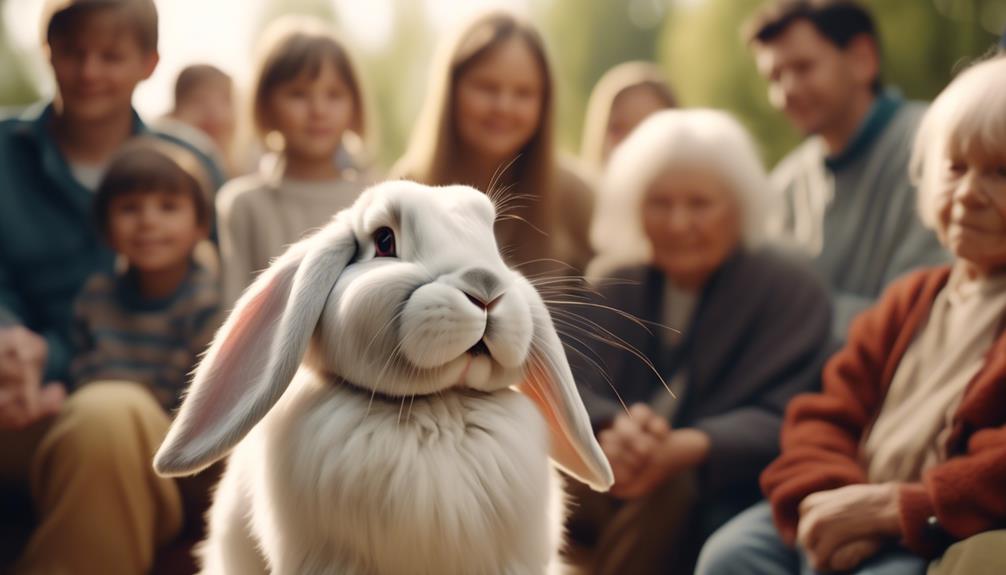
Are you tired of the same old pets that everyone seems to have? Looking for something unique and charming to bring a touch of delight into your life?
Well, look no further because the German Lop Rabbit is here to steal your heart! This adorable breed, with its distinctive Roman nose and captivating appearance, is the perfect companion for people of all ages.
But that’s not all – there’s so much more to discover about the German Lop Rabbit’s care, health, and special qualities.
So, let’s embark on this exciting journey together and uncover why this furry friend is truly a perfect pet!
Key Takeaways
- German Lop rabbits have a commercial body shape and weigh between 6-8 pounds, making them a medium-sized breed.
- They have a docile temperament and are known for their affectionate and calm nature.
- The breed originated in Germany and was developed from French Lops and Netherland Dwarfs.
- German Lop rabbits have a distinctive Roman nose and large ears measuring 11-14 inches.
German Lop Rabbit Characteristics
German Lop Rabbits are known for their distinct characteristics and are highly regarded as the perfect pet for various types of owners. These adorable rabbits typically weigh between 6-8 pounds and have a lifespan of 9-12 years. They’ve a commercial body shape and are incredibly affectionate, calm, and docile in temperament.
German Lop Rabbits originated in Germany and were bred from French Lops and Netherland Dwarfs. One of their distinctive features is their Roman nose. They were officially recognized in 1970 and imported into Holland in 1972.
German Lop Rabbits have a muscular and well-rounded body shape with large ears measuring 11-14 inches. Their coat consists of normal-length dense hair fibers and requires minimal care. The British Rabbit Council accepts various colors for this breed.
German Lop Rabbit Breed History
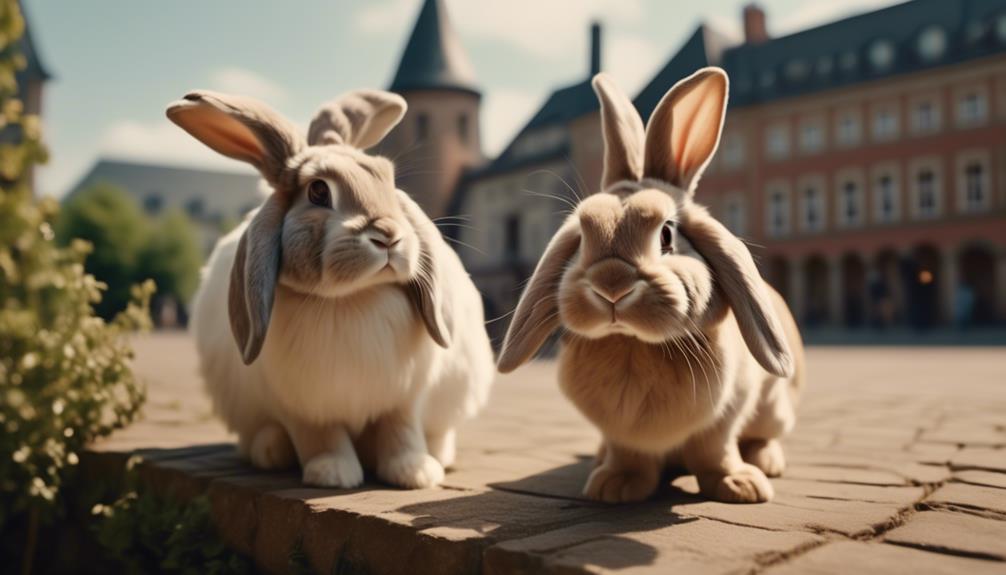
The origins of the German Lop Rabbit breed can be traced back to its unique combination of French Lops and Netherland Dwarfs. This fascinating blend of two distinct rabbit breeds resulted in the creation of the German Lop Rabbit, a breed with a rich history and distinctive characteristics.
Here are three key facts about the breed’s history:
- Originated in Germany: The German Lop Rabbit breed was first developed in Germany, where breeders sought to create a rabbit with the unique characteristics of both French Lops and Netherland Dwarfs.
- Bred from French Lops and Netherland Dwarfs: The breed’s lineage can be traced back to the intentional crossbreeding of French Lops and Netherland Dwarfs, combining the larger size and lop ears of the French Lops with the compact body and small size of the Netherland Dwarfs.
- Imported and standardized: The German Lop Rabbit breed was officially recognized in 1970 and imported into Holland in 1972. It was then standardized in the Netherlands in 1976, solidifying its place as a distinct and recognized breed.
The German Lop Rabbit’s breed history showcases its unique combination of traits and the deliberate efforts of breeders to create a rabbit that’s both visually appealing and affectionate.
German Lop Rabbit Description
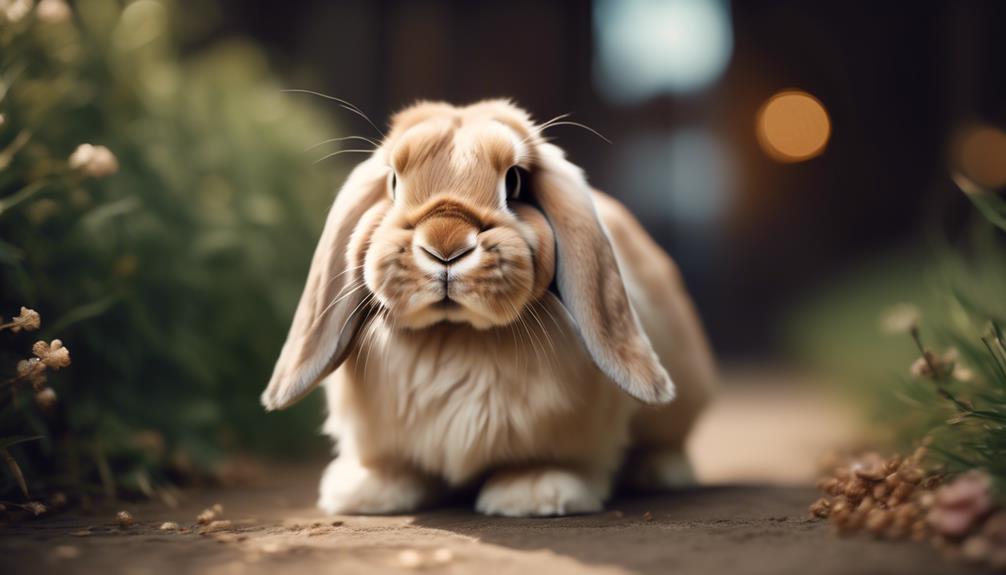
With its muscular and well-rounded body shape, the German Lop Rabbit is a visually appealing breed that captivates rabbit enthusiasts. This charming rabbit has large ears measuring 11-14 inches, which add to its adorable appearance. The German Lop Rabbit’s coat is covered in normal-length dense hair fibers, requiring minimal care.
The British Rabbit Council recognizes various accepted colors for this breed, allowing for a wide range of options. Weighing between 6-8 pounds, this breed is of medium size.
In terms of temperament, German Lop Rabbits are known for being affectionate, calm, and docile, making them suitable for singles, seniors, children, and first-time owners. Whether indoors or outdoors, these rabbits thrive in comfortable environments with adequate space for movement.
German Lop Rabbit Care Requirements
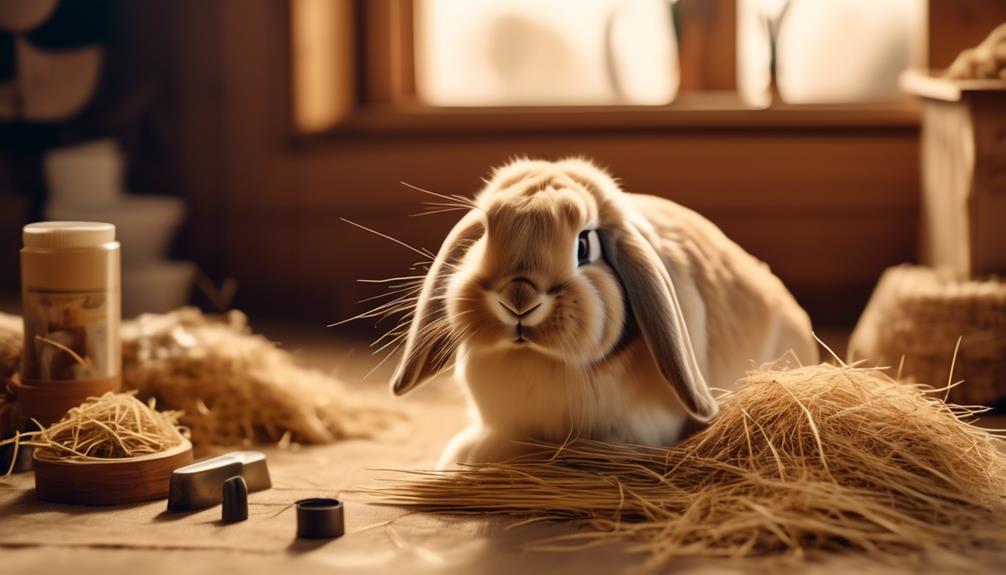
To properly care for a German Lop Rabbit, you need to ensure that their diet consists of 70% hay and a 30% mix of pellets, fruits, vegetables, and leafy greens.
Here are the care requirements for your German Lop Rabbit:
- Provide adequate space: Your German Lop Rabbit needs enough room for comfortable movement. Outdoor enclosures should be protected from the elements, while indoor enclosures can be made of wire with a solid bottom.
- Regular exercise and exploration: It’s important to give your German Lop Rabbit regular exercise and the opportunity to explore in a bunny-safe room. This will help keep them active and prevent boredom.
- Pay attention to their health: German Lop Rabbits are generally healthy, but you should still watch out for certain issues. Check their teeth regularly for overgrowth and inspect their ears for mites. Sore hocks can occur if they’re kept on a wire bottom enclosure, and flystrike can be a concern in hotter months.
German Lop Rabbit Health
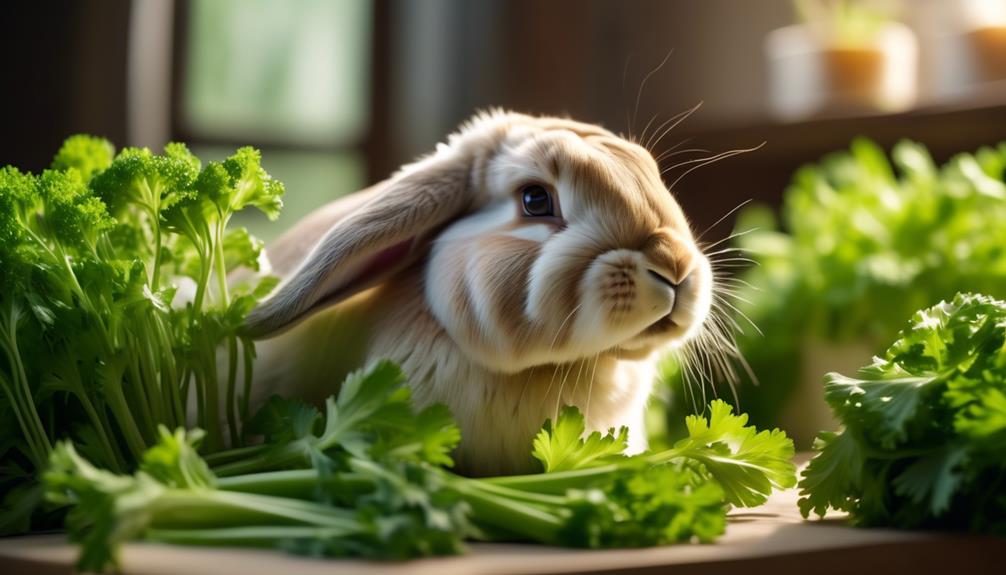
To ensure the well-being of your German Lop Rabbit, it’s important to prioritize their health by taking certain precautions.
While German Lop Rabbits are generally healthy and don’t have any particular disease or health issues, there are a few things to keep in mind.
One potential issue is sore hocks, which can occur if your rabbit is kept on a wire bottom enclosure. To prevent this, make sure to provide a solid surface for them to rest on.
Another concern, especially during hotter months, is flystrike. Regular checks and proper hygiene can help prevent this condition.
Additionally, it’s important to regularly check your rabbit’s teeth for overgrowth and their ears for mites.
Frequently Asked Questions
Are German Lop Rabbits Good With Other Pets in the Household?
German Lop rabbits can get along well with other pets in the household, as long as proper introductions and supervision are provided. They have a calm and docile temperament, making them adaptable to different social environments.
How Often Should German Lop Rabbits Be Groomed?
You should groom your German Lop rabbit regularly to keep their coat in good condition. Brush them at least once a week to remove loose fur and prevent mats.
Can German Lop Rabbits Be Litter Trained?
Yes, German Lop rabbits can be litter trained. Provide a litter box with hay or paper-based litter. Place their droppings in the box to encourage them. Be patient and consistent with training.
What Is the Average Cost of Owning a German Lop Rabbit?
The average cost of owning a German Lop rabbit can vary depending on factors such as location, breeder, and any additional supplies needed. It is best to research and contact local breeders for specific pricing information.
Do German Lop Rabbits Require Any Special Vaccinations?
No, German Lop rabbits do not require any special vaccinations. Regular teeth checks and periodic checks for ear mites are recommended, but they do not need any specific vaccinations for their overall health and well-being.
Are German Lop Rabbits Also Suitable Pets for All Ages, Like English Lop Rabbits?
Yes, German Lop Rabbits are also suitable pets for all ages, just like the adorable English Lop rabbit. Their gentle nature and affectionate demeanor make them great companions for both children and adults. With proper care and attention, German Lop rabbits can be wonderful pets for families of all ages.
Conclusion
In conclusion, the German Lop Rabbit is a delightful and perfect pet for individuals of all ages.
With its charming characteristics, gentle temperament, and minimal care requirements, it’s an ideal choice for busy individuals and families.
Whether you’re a single individual, a senior, or a first-time owner, the German Lop Rabbit is sure to capture your heart and bring joy and delight to your home.

